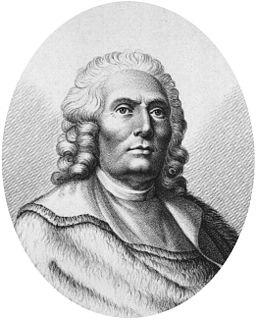 W
WJean Astruc was a professor of medicine at Montpellier and Paris, who wrote the first great treatise on syphilis and venereal diseases, and also, with a small anonymously published book, played a fundamental part in the origins of critical textual analysis of works of the Bible. Astruc was the first to try to demonstrate, by using the techniques of textual analysis that were commonplace in studying the secular classics, the theory that Genesis was composed based on several sources or manuscript traditions, an approach now called the documentary hypothesis.
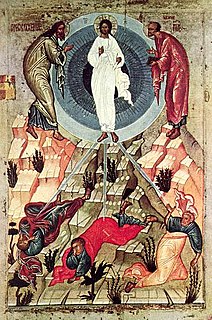 W
WBernard of Clairvaux, venerated as Saint Bernard, was a Burgundian abbot, and a major leader in the revitalization of Benedictine monasticism through the nascent Order of Cistercians.
 W
WÉtienne Binet (1569–1639) was a Jesuit author of 45 published works. He was born in Dijon, France, and died in Paris.
 W
WJacques-Bénigne Lignel Bossuet was a French bishop and theologian, renowned for his sermons and other addresses. He has been considered by many to be one of the most brilliant orators of all time and a masterly French stylist.
 W
WMère Cécile Bruyère was the first abbess of St. Cecilia's Abbey, Solesmes and a follower of Dom Prosper Guéranger in the revival of Benedictine spirituality in 19th century France.
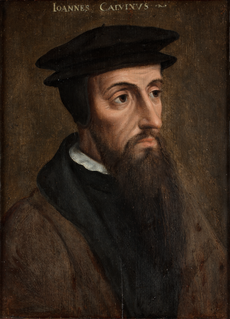 W
WJohn Calvin was a French theologian, pastor and reformer in Geneva during the Protestant Reformation. He was a principal figure in the development of the system of Christian theology later called Calvinism, aspects of which include the doctrines of predestination and of the absolute sovereignty of God in salvation of the human soul from death and eternal damnation, in which doctrines Calvin was influenced by and elaborated upon the Augustinian and other Christian traditions. Various Congregational, Reformed and Presbyterian churches, which look to Calvin as the chief expositor of their beliefs, have spread throughout the world.
 W
WAbbé Guy-Toussaint-Julien Carron (1760–1821) was a French Roman Catholic priest who founded a number of social and educational institutions, especially while in exile in England, and was a prolific author of pious tracts.
 W
WSaint Jane Frances de Chantal is a Catholic saint, who was beatified in 1751 and canonized in 1767. She founded the religious Order of the Visitation of Holy Mary. The order accepted women who were rejected by other orders because of poor health or age. When people criticized her, Chantal famously said, "What do you want me to do? I like sick people myself; I'm on their side." During its first eight years, the new order also was unusual in its public outreach, in contrast to most female religious who remained cloistered and adopted strict ascetic practices.
 W
WJean-Baptiste du Val-de-Grâce, baron de Cloots, better known as Anacharsis Cloots, was a Prussian nobleman who was a significant figure in the French Revolution. Perhaps the first to advocate a world parliament, long before Albert Camus and Albert Einstein, he was a world federalist and an internationalist anarchist. He was nicknamed "orator of mankind", "citoyen de l'humanité" and "a personal enemy of God".
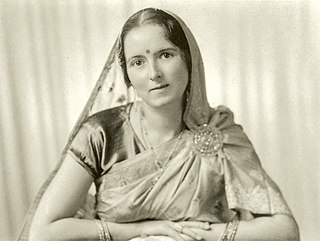 W
WSavitri Devi Mukherji was a French-born proponent of Nazism who served the Axis powers by committing espionage on the forces of the Allies of World War II in India. She was later a leading member of the Nazi underground during the 1960s.
 W
WGuillaume du Vair was a French author and lawyer.
 W
WHenri-François-Alphonse Esquiros was a French writer born in Paris. He usually wrote with the name Alphonse Esquiros.
 W
WFrançois de Salignac de la Mothe-Fénelon, more commonly known as François Fénelon, was a French Roman Catholic archbishop, theologian, poet and writer. He today is remembered mostly as the author of The Adventures of Telemachus, first published in 1699.
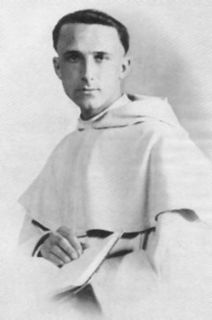 W
WRéginald Marie Garrigou-Lagrange was a French Catholic theologian and Dominican friar. He has been noted as a leading neo-Thomist of the 20th century, along with Jacobus Ramírez, Édouard Hugon, and Martin Grabmann. He taught at the Dominican Pontifical University of St. Thomas Aquinas, the Angelicum, in Rome from 1909 to 1960. There he wrote his magnum opus, The Three Ages of the Interior Life in 1938.
 W
WAuguste Joseph Alphonse Gratry was a French author and theologian.
 W
WHenri Jean-Baptiste Grégoire, often referred to as the Abbé Grégoire, was a French Catholic priest, Constitutional bishop of Blois and a revolutionary leader. He was an ardent abolitionist of human slavery and supporter of universal suffrage. He was a founding member of the Bureau des longitudes, the Institut de France, and the Conservatoire national des arts et métiers.
 W
WEugénie de Guérin was a French writer and the sister of the poet Maurice de Guérin.
 W
WJeanne-Marie Bouvier de la Motte-Guyon was a French mystic and was accused of advocating Quietism, although she never called herself a Quietist. Quietism was considered heretical by the Roman Catholic Church, and she was imprisoned from 1695 to 1703 after publishing the book A Short and Very Easy Method of Prayer.
 W
WFabrice Hadjadj is a French writer and philosopher.
 W
WJean Hamon was a French doctor and writer of many works on medical and religious subjects. He was born in Cherbourg. A Jansenist, he taught at the Petites écoles de Port-Royal. He died in Paris.
 W
WServant of God John of St. Samson (1571–1636), also known as Jean du Moulin or Jean de Saint-Samson, was a French Carmelite friar and mystic of the Catholic Church. He is known as the soul of the Touraine Reform of the Carmelite Order, which stressed prayer, silence and solitude. John was blind from the age of three after contracting smallpox and receiving poor medical treatment for the disease. He insisted very strongly on the mystical devotion of the Carmelites. He has been referred to as the "French John of the Cross" by students of Christian mysticism.
 W
WBrother Lawrence of the Resurrection served as a lay brother in a Carmelite monastery in Paris. Christians commonly remember him for the intimacy he expressed concerning his relationship to God as recorded in a book compiled after his death, the classic Christian text, The Practice of the Presence of God.
 W
WAuguste Lecerf (1872–1943) was a French Reformed pastor of the Église réformée de France and a partly autodidact neo-Calvinist theologian. From 1927 onwards, he was dogmatics professor at the Protestant Faculty of Theology in Paris. As a specialist in Jean Calvin, he authored several books and articles on Reformed dogmatics.
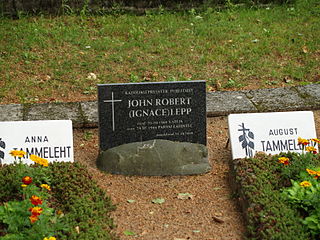 W
WIgnace Lepp, was a French writer of Estonian origin.
 W
WÉlisabeth Arrighi Leseur, born Pauline Élisabeth Arrighi, was a French mystic best known for her spiritual diary and the conversion of her husband, Félix Leseur (1861–1950), a medical doctor and well known leader of the French anti-clerical, atheistic movement. The cause for the beatification of Elisabeth Leseur was started in 1934. Her current status in the process is that of a Servant of God.
 W
WPierre Nicole was one of the most distinguished of the French Jansenists.
 W
WClaude-Adrien Nonnotte was a French Jesuit controversialist, best known for his writings against Voltaire.
 W
WVincent de Paul commonly known as Saint Vincent de Paul was a French Catholic priest who dedicated himself to serving the poor. In 1622 Vincent was appointed a chaplain to the galleys. After working for some time in Paris among imprisoned galley slaves, he returned to be the superior of what is now known as the Congregation of the Mission, or the "Vincentians". These priests, with vows of poverty, chastity, obedience, and stability, were to devote themselves entirely to the people in smaller towns and villages. Vincent was zealous in conducting retreats for clergy at a time when there was great laxity, abuse, and ignorance among them. He was a pioneer in clerical training and was instrumental in establishing seminaries, and founder of the Congregation of the Mission and Daughters of Charity of Saint Vincent de Paul.
 W
WRené Rapin (1621–1687) was a French Jesuit and writer.
 W
WMarie-Théodor Ratisbonne, N.D.S., was a French Jewish convert to the Catholic Church, who became a priest and missionary and who later founded the Congregation of Our Lady of Sion. He was the brother of Marie-Alphonse Ratisbonne, who joined him in this effort.
 W
WHervé Roullet is a composer and French Catholic writer.
 W
WFrancis de Sales was a Bishop of Geneva and is honored as a saint in the Catholic Church. He became noted for his deep faith and his gentle approach to the religious divisions in his land resulting from the Protestant Reformation. He is known also for his writings on the topic of spiritual direction and spiritual formation, particularly the Introduction to the Devout Life and the Treatise on the Love of God.
 W
WHippolyte Simon was a French Roman Catholic archbishop. He served as Bishop of Clermont from 1996 to 2002 before becoming Archbishop, serving until 2016. He was Vice-President of the Bishops' Conference of France from 2007 to 2013.
 W
WPierre Teilhard de Chardin was a French idealist philosopher and Jesuit Catholic priest who trained as a paleontologist and geologist and took part in the discovery of the Peking Man. He conceived the vitalist idea of the Omega Point, and he developed with Vladimir Vernadsky the concept of noosphere. Teilhard's ideas had a profound influence on the New Age movement.
 W
WThérèse of Lisieux, born Marie Françoise-Thérèse Martin, also known as Saint Thérèse of the Child Jesus and the Holy Face, was a French Catholic Discalced Carmelite nun who is widely venerated in modern times. She is popularly known as "The Little Flower of Jesus", or simply "The Little Flower.”
 W
WSimone Adolphine Weil was a French philosopher, mystic, and political activist. The mathematician André Weil was her brother.